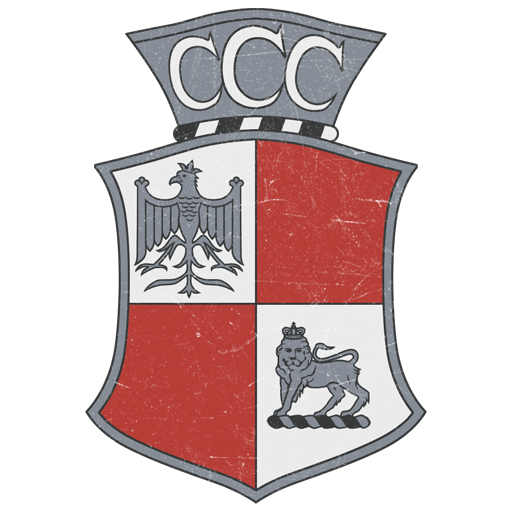
- For PC
- For MAC
- For Linux
- OS: Windows 10 (64 bit)
- Processor: Dual-Core 2.2 GHz
- Memory: 4GB
- Video Card: DirectX 11 level video card: AMD Radeon 77XX / NVIDIA GeForce GTX 660. The minimum supported resolution for the game is 720p.
- Network: Broadband Internet connection
- Hard Drive: 23.1 GB (Minimal client)
- OS: Windows 10/11 (64 bit)
- Processor: Intel Core i5 or Ryzen 5 3600 and better
- Memory: 16 GB and more
- Video Card: DirectX 11 level video card or higher and drivers: Nvidia GeForce 1060 and higher, Radeon RX 570 and higher
- Network: Broadband Internet connection
- Hard Drive: 75.9 GB (Full client)
- OS: Mac OS Big Sur 11.0 or newer
- Processor: Core i5, minimum 2.2GHz (Intel Xeon is not supported)
- Memory: 6 GB
- Video Card: Intel Iris Pro 5200 (Mac), or analog from AMD/Nvidia for Mac. Minimum supported resolution for the game is 720p with Metal support.
- Network: Broadband Internet connection
- Hard Drive: 22.1 GB (Minimal client)
- OS: Mac OS Big Sur 11.0 or newer
- Processor: Core i7 (Intel Xeon is not supported)
- Memory: 8 GB
- Video Card: Radeon Vega II or higher with Metal support.
- Network: Broadband Internet connection
- Hard Drive: 62.2 GB (Full client)
- OS: Most modern 64bit Linux distributions
- Processor: Dual-Core 2.4 GHz
- Memory: 4 GB
- Video Card: NVIDIA 660 with latest proprietary drivers (not older than 6 months) / similar AMD with latest proprietary drivers (not older than 6 months; the minimum supported resolution for the game is 720p) with Vulkan support.
- Network: Broadband Internet connection
- Hard Drive: 22.1 GB (Minimal client)
- OS: Ubuntu 20.04 64bit
- Processor: Intel Core i7
- Memory: 16 GB
- Video Card: NVIDIA 1060 with latest proprietary drivers (not older than 6 months) / similar AMD (Radeon RX 570) with latest proprietary drivers (not older than 6 months) with Vulkan support.
- Network: Broadband Internet connection
- Hard Drive: 62.2 GB (Full client)

On the July 1st 1940 the first ‘all Polish’ crewed RAF bomber squadron was formed in Bramcote, Warwickshire, Great Britain. No. 300 (Masovian) Squadron began operation as part of No. 6 Training Group, but would eventually become the No. 1 Bomber Group in 1941. Starting off with Fairey Battle aircraft, they would eventually progress to Vickers Wellingtons and conclude with Avro Lancasters. No. 300 Squadron would call no less than five airbases their home during their time of operation, beginning with RAF Bramcote followed by Swinderby, Hemswell, Ingham and Faldingworth.
Adopting the squadron code letters ‘BH’ with their first Commanding Officer, Wacław Makowski, operations began in 1940. Initially, the intended targets were the German invasion barges placed on the French coast, aiming to damage the potential of the feared invasion of Great Britain with Operation Sea Lion. By October of 1940, No. 300 Squadron began to re-equip with Vickers Wellingtons, initially Mk Ic models. This would lead to service with the Mk III, IV and X as the war progressed.
The Wellington was a tough and reliable bomber that made use of a geodesic airframe design. Because of this, it was a rugged bomber by construction and nature. However, by the middle of the Second World War, it was beginning to show signs of age and would slowly be replaced by four engined heavy bombers which offered longer range as well as substantially larger bomb capacities.
By 1942, future, more progressive designs when compared with the Wellington were already being discussed, with newer alternatives such as the Short Stirling and Handley-Page Halifax. However the decision was made for Wellingtons to remain in service until the Avro Lancaster was available. No. 300 Squadron would see the Wellington’s swansong operations in RAF Bomber Command service, taking part in both the last bombing raid and operational sortie with the aircraft before it, before being removed from frontline operations.
In 1944 No. 300 squadron began the conversion to the Lancaster B Mk I and B Mk III, with A Flight remaining with the Wellington whilst B Flight converted over, so as not to disrupt front line operations. Repeated raids on several German cities such as Dortmund, Essen, Cologne and Hamburg would take place, which would continue throughout 1944 and into 1945 as the allies pushed deeper into Occupied Europe and Germany itself.
The very last wartime operational sortie of No. 300 Squadron would be a raid on Hitler's personal residence at Berchtesgaden before the conclusion of the war in Europe in 1945. Throughout the war, No. 300 Squadron dropped a combined total of around 10,000 tons of ordinance on enemy targets. After combat operations had ceased, No. 300 Squadron was also part of several key operations such as Operation Dodge, Exodus and Manna; the last of which would see around 150 tonnes of supplies delivered to the Dutch via Lancaster bombers before VE day in May of 1945.
The Polish crews of No. 300 Squadron received many decorations, commendations and distinctions for their service during the war. They played a key role in many critical bombing operations by Bomber Command throughout the conflict, with missions such as the 1000 bomber raid of Operation Millennium, Raids over the Rhine, Ruhr and D-Day sites as well as V-Weapon launch locations. Officially disbanded in February 1947, their contributions to both the allied war effort and RAF Bomber Command are a lasting reminder of the combined skill, bravery and determination to fight on displayed by Polish servicemen of all arms throughout the war.
Author: Scott "Smin1080p" Maynard
With an upcoming Update, we will add the following decals to War Thunder:
 |
| Emblem of No. 300 Polish Bomber Squadron |
Decal by Colin 'Fenris' Muir





